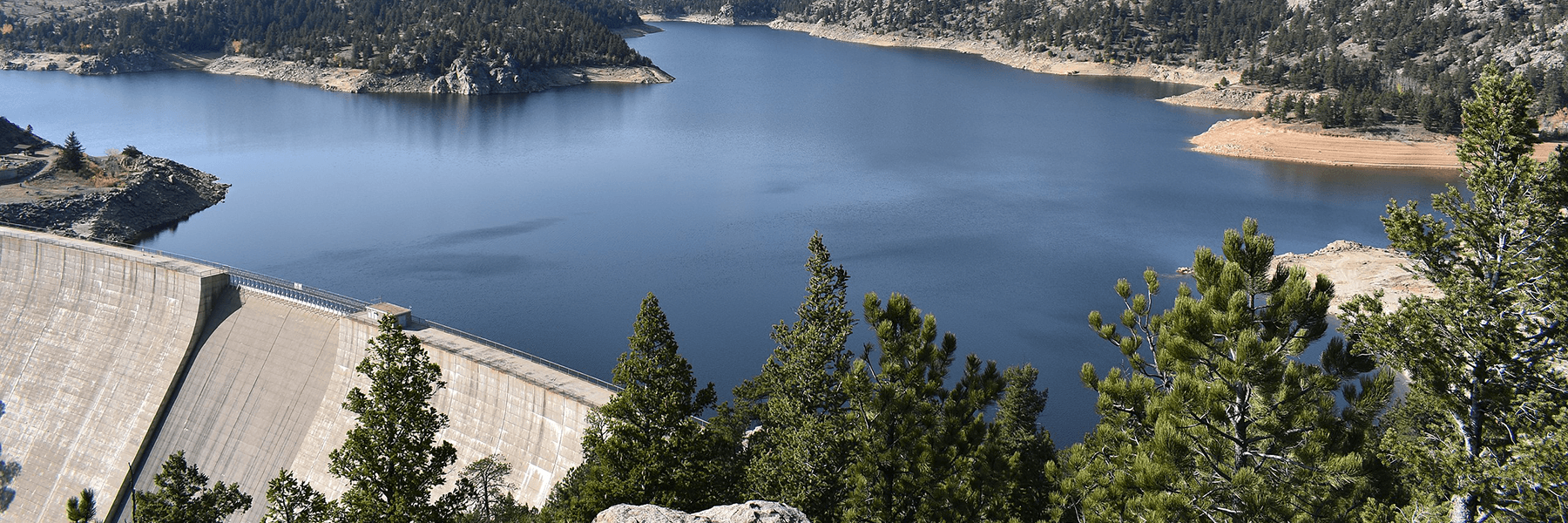Blasts from the Past: Model simulation study of historical storms helps modernize dam safety rules and flood risk estimates

Dam failures pose significant flood risks to life and property. Knowing the “upper limit” for extreme precipitation potential in a given region is critical for dam safety and water resources management. Methods used to estimate the theoretical “upper limit” of precipitation are largely outdated, and old storms with limited, sometimes dubious observations are often used to define present-day extreme rainfall risk. The large uncertainties associated with historical events can reduce confidence in flood hazard assessments and lead to unknown or uncertain societal risk.
New research, led by NOAA and CIRES researchers at the Physical Sciences Lab and to be published in the Bulletin of the American Meteorological Society, describes a method for generating and applying high-resolution, state-of-the-art model simulations of historical past extreme precipitation events to meet contemporary stakeholder needs. These model simulations enhance understanding of historical storms and produce more comprehensive data, which were used to update the latest state dam safety rules in Colorado and New Mexico, and may inform future applications in other locations as well.
The method used for this study was designed as part of a research-to-application-focused partnership project to update state dam safety rules in Colorado and New Mexico. The results demonstrated multiple stakeholder and user benefits, which were applied directly into storm analyses used for extreme rainfall estimation. Detailed findings include:
- Case studies selected for their importance in determining dam safety rules demonstrated relatively robust results for strongly-forced, terrain-influenced events, and highlighted important uncertainties in more weakly-forced or poorly-observed cases.
- Groups of many model simulations of the selected cases collectively illustrated strengths, weaknesses, and future opportunities to improve this approach for use in current Probable Maximum Precipitation (PMP) estimation, and established broader motivation for the use of dynamical models in future PMP estimation improvements
- Diagnostics were developed and ultimately used to update Colorado state dam safety rules, officially passed in January 2020.
- This study demonstrated how the historical event downscaling method offers near-term, implementable improvements to current dam safety flood risk estimates that can better serve society today.
Estimating future extreme rainfall requires understanding what has occurred in the past. Combining model simulations of historical events with observational data improves dam safety and water infrastructure guidelines. This work may ultimately inform wider adoption of model simulations for water resources risk assessment.
Mahoney, Kelly (PSL), Chesley McColl (PSL/CIRES), Douglas M. Hultstrand, William D. Kappel, Bill McCormick, and Gilbert P. Compo (PSL/CIRES) (2021). Blasts from the past: Reimagining historical storms with model simulations to modernize dam safety and flood risk assessment, Bull. Amer. Meteor. Soc., https://doi.org/10.1175/BAMS-D-21-0133.1.
Posted: December 17, 2021